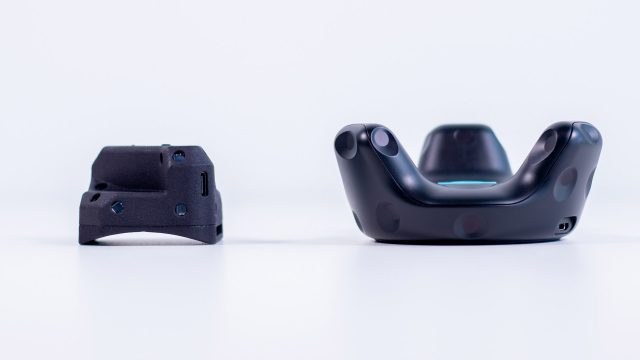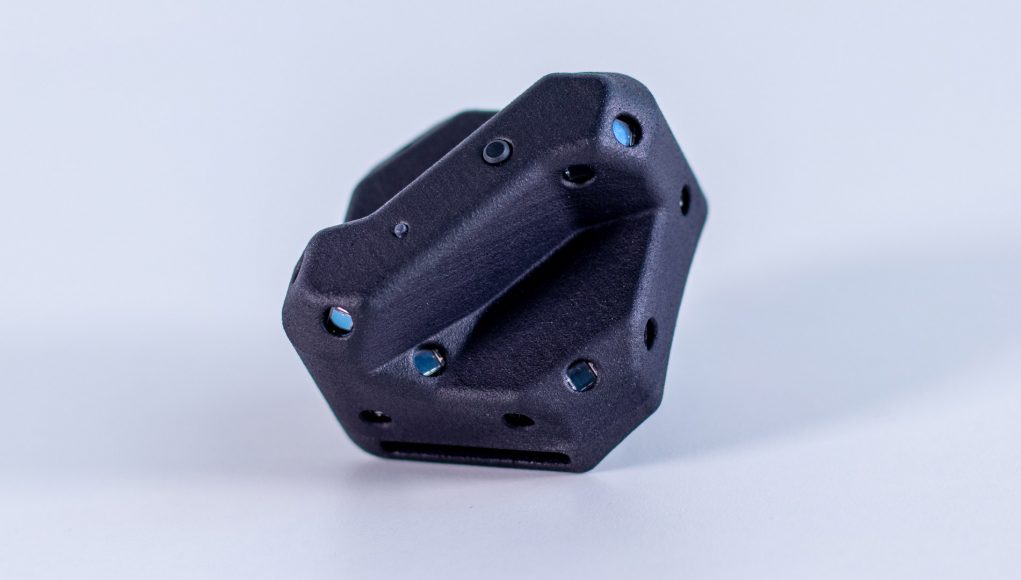Tundra Labs, the company developing the Tundra Tracker SteamVR Tracking accessory, has revealed pricing for the device starting at $95. Previously planned for earlier in the year, a Kickstarter campaign for the tracker is set to launch on March 29th with the first deliveries expected in July.
Tundra Tracker is an upcoming SteamVR Tracking tracker designed as an alternative to HTC’s Vive Tracker; we previously revealed many details of the tracker here.
Compared to the new Vive Tracker 3.0 revealed this week, Tundra Labs says the Tundra Tracker is still the smaller of the two, though it isn’t clear yet how the improved battery life of the Vive Tracker 3.0 will compare to the Tundra Tracker (Tundra Labs previously said its tracker would have better battery life than the Vive Tracker 2.0).
This week has brought the first look at the official pricing for the Tundra Tracker. Pricing is slightly confusing because the company is actually selling three different dongles, all of which connect via one USB connection, but are capable of connecting a different number of devices. We’ve labeled them A, B, and C for clarity:
| Tracker | Dongle | Price |
| 1x | – | $95 |
| 1x | Dongle A (up to 3 devices) | $130 |
| 3x | Dongle A (up to 3 devices) | $300 |
| 5x | Dongle B (up to 5 devices) | $460 |
| 7x | Dongle C (up to 7 devices) | $630 |
| – | Dongle A (up to 3 devices) | $43 |
| – | Dongle B (up to 5 devices) | $60 |
| – | Dongle C (up to 7 devices) | $80 |
Tundra Labs is positioning its multi-device dongles as a unique advantage over the Vive Tracker dongles.
Vive Trackers need one dongle per tracker, so if you want to use 5x Vive Trackers for body tracking, you’d need connect 5x Vive Tracker dongles to your computer (each on their own USB port, or with a third-party USB hub).
All of the Tundra Tracker dongles, on the other hand, use a single USB port but can connect multiple devices. Tundra Labs says its dongles are also capable of connecting Vive Trackers, controllers, and other peripherals which use SteamVR Tracking (including the ability to mix and match), and its dongles are designed to fit inside the ‘frunk’ USB accessory port on the Valve Index. (Vive Tracker dongles can also connect any SteamVR Tracking peripherals, but only one device per dongle.)

Tundra Labs told us at the outset that it was aiming for “slightly cheaper” pricing than the Vive Tracker 2.0; here’s how pricing compares between Tundra Tracker, Vive Tracker 2.0, and the new Vive Tracker 3.0:
| Tracker Count | Tundra Tracker | Vive Tracker 2.0 | Vive Tracker 3.0 |
| 1x | $130 (Dongle A) | $100 | $130 |
| 3x | $300 (Dongle A) | $300 | $390 |
| 5x | $460 (Dongle B) | $500 | $650 |
| 7x | $630 (Dongle C) | $700 | $910 |
Tundra Labs said this week that it’s still on track for a March 29th Kickstarter. Assuming the campaign succeeds, initial delivers are expected to begin in July.







